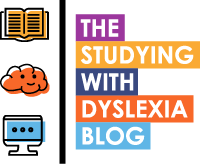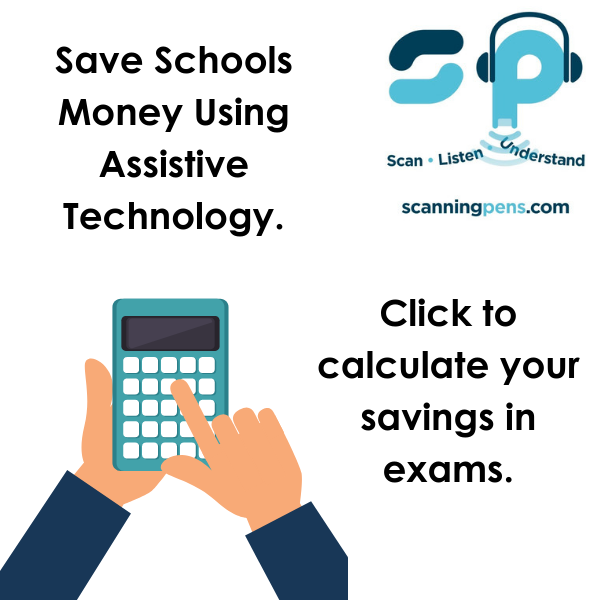Could the ‘We don’t have enough funds to support your child!’ response from some schools be a thing of the past?
This article is brought to you by Scanning Pens.
With school budgets getting tighter and tighter impacting on the level of support being made available for dyslexic students, it is about time that there is some good news. In this article, I will show you how teachers and parents can put a case together to argue that in providing support with assistive technology, a student not only benefits in terms of attainment but the school also saves money.
In the recent Human Cost Of Dyslexia report that was commissioned by the British Dyslexia Association to influence policy makers about the emotional impact of dyslexia on our young people, ONLY 30% of the parents of dyslexic children who participated said that they felt that their schools took the support of their dyslexic children seriously.
I have often also heard from parents on my Parenting Dyslexia Facebook Group that requesting support for their children is extremely exhausting and anxiety laden with many schools unlawfully opting not to support a child citing cuts in funding in delivering mainstream education.
So how do you as a parent counteract an argument like that from your child’s school? It would seem that the main option is to show the school how clever decisions about support could actually save the school money.
One aspect of this is the decision to use authorised technology that can be used not only in the classroom but also in exams. Increasingly technology for studying or the more accurate term ‘Assistive Technology’ is helping young people who struggle with dyslexia to develop skills in independent learning that helps with confidence and self-esteem and of course attainment. Within the context of this article, it also means that the school is able to make significant savings on their running costs by allowing a child to access technology that helps.
How can we convince a school that investing in assistive technology saves money?
Before we can do that we need to put ourselves into the shoes of the people who run our schools. Whilst I doubt that any educational professional would dispute that helping a child unlock potential is important, we have to understand that the managers of schools are managing budgets that are often inflexible and not vast in resource. So they need to be absolutely sure that what they spend that money on delivers a financial benefit in some way.
We need to understand the financial impact that supporting a dyslexic student has on a school and then we need to put together our argument.
A lot of the cost will be surrounding the lack of autonomy that a dyslexic student may have with reading and this is particularly pertinent in the case of tests and exams.
How to save money for schools whilst supporting dyslexic students in exams.
I recently came across a utility on the Scanning Pens website that actually takes you through the calculations for how much it costs a school to provide reasonable adjustments for supporting a dyslexic student during an exam.
The calculator is mostly for teachers and exam officers to use to illustrate savings that could be made from using the C Pen Exam Reader, a small pen-like device that is used to scan text and read out loud via headphones.
The calculator computes the following costs:
Human Readers
Staff or sessional staff who sit with dyslexic exam candidates and reads out questions in exams to the candidate.
SENCO time.
Time spent by the SENCO to complete the paperwork to apply for reader support in an exam for a candidate.
Exam Officer Time
Time spent by the exam officer in applying for support for a candidate.
Room Resources
How many separate rooms are required for the number of candidates with dyslexia to undertake the exam with a human reader.
In the calculator, a school manager is able to calculate how much money it would cost to provide human readers in exams for students who struggle with reading exam papers. To use a human reader the school has to apply to get authorisation to use the reader for the students. This takes time and money too. Added to this, as the human reader can’t be listened to via headphones, they will disturb other exam candidates and so that whole support process needs to take place in another room.
Some Assistive Technology is now accepted as technology that can be used by ANY student in an exam setting, such as the C-Pen Exam Reader from Scanning Pens, so if a student needs to use one, the school can just simply choose to allocate one to a student rather than apply for permission (which takes time and money). Equally, because the device can be used with earphones, the exam candidate doesn’t need to take their exams in a different room, this reduces the need for more space and staff to supervise the exam.
The above is just one example of how technology can help a student to thrive whilst saving the school money.
Over the years as I have tried out various types of assistive technology I can see that it really helps to promote autonomy for students at school or university whilst learning, with autonomy comes less of a need for a staff member to spend time supporting them which helps with maintaining resources thus saving schools money.
What do teachers think?
The following quotations come from schools who have purchased the C Pen Exam Reader to support their students:
Priory Community School-
“The exam reader certainly saves staff time and money, we can use less invigilators for exams as we use less rooms. During class time the SEND teaching assistants can be deployed around the entire room instead of having to stay with mainly one or two students.”
Limerick University
“We brought them on to try them and see how we got on. We picked 5 students and it worked really well. After it went from 5 to 40 to 120 students. It’s given them independence & financially it saved us 7000 EUR for one semester in just the 1st year.
So now we’re thinking and when we have it fully deployed it, it would be like saving us 20/25 to 30,000 EUR a semester.”
Trevelyan Middle School
“Where schools pay for the services of a ‘reader’ I can see this cost being significantly reduced. The Exam Reader is an expensive outlay for a school, but one that will very quickly pay for itself in cost and time savings”
If you are a supporter of a dyslexic student, I would encourage you to explore the world of assistive technology and find products that can really make a difference to the ability for the student to increase their autonomy with reading. I have used in this blog article the example of Scanning Pens, but there is a wealth of technology available out there. Do get in touch with me should you like to know more.





